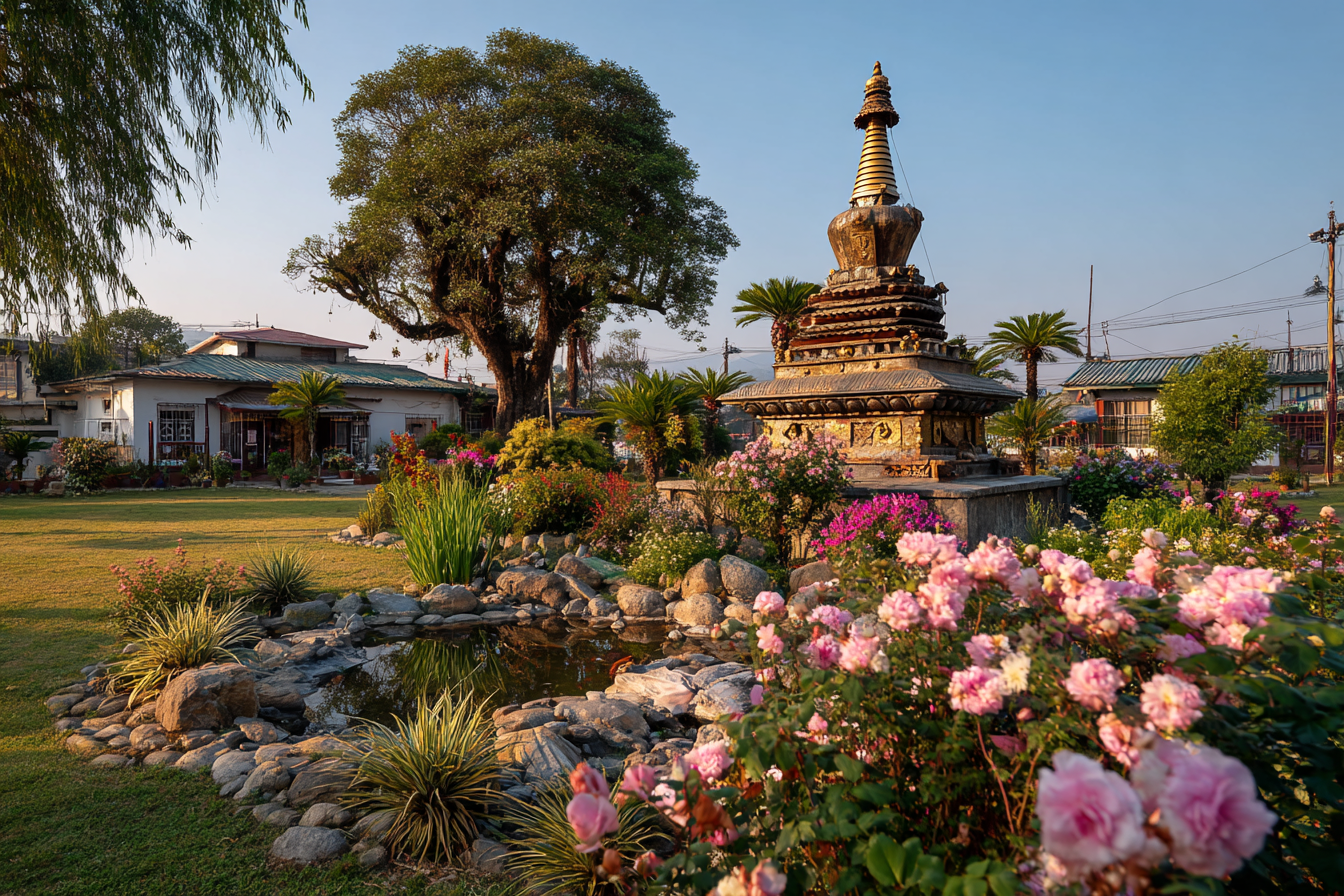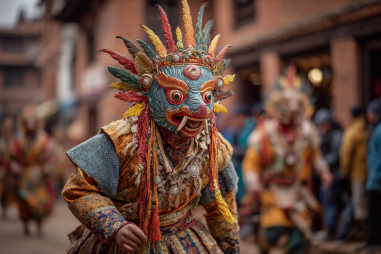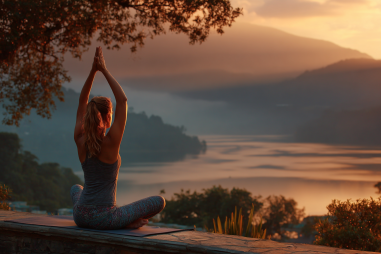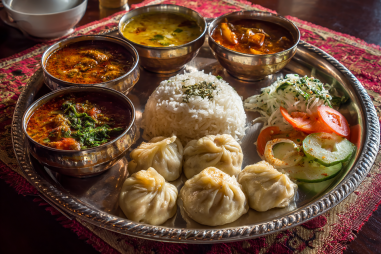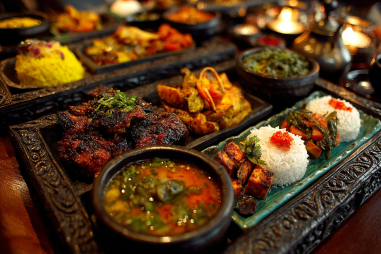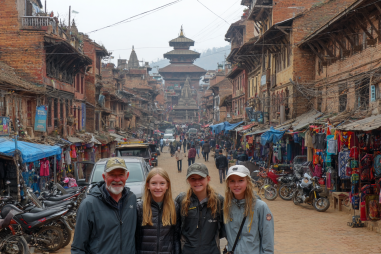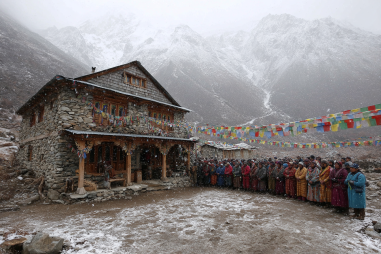Lumbini, the serene birthplace of Lord Buddha, attracts countless visitors each year who come seeking peace, spirituality, and a connection to history. Choosing the right time to visit Lumbini can significantly enrich your experience, whether you’re eager to witness vibrant religious festivals, enjoy pleasant weather, or explore the sacred sites without the hustle and bustle of large crowds. Let’s take a detailed look at when you should plan your trip to this tranquil town in Nepal.
Climate Overview of Lumbini Throughout the Year
Lumbini experiences a subtropical climate with distinct seasons that influence weather and travel comfort. The temperatures range moderately throughout the year, with variations between hot summers and mild winters. Understanding the climate patterns will help you prepare better and decide the best time for your visit.
From March to May, Lumbini enters its warm pre-monsoon season, where temperatures can rise and humidity levels increase. June through September marks the monsoon season, characterized by heavy and frequent rainfall, leading to lush green landscapes but sometimes making travel and outdoor sightseeing challenging. October to February is the dry season, offering cooler and more comfortable weather, especially in the mornings and evenings.
Best Months for Weather and Sightseeing
The ideal times to visit Lumbini largely fall within the spring and autumn months when the weather is mild and rainfall is minimal. Specifically, March to May and October to early December provide a comfortable climate for sightseeing and exploring the temples, gardens, and various meditation spots without the discomfort of extreme temperatures or wet conditions.
During these months, you can expect clear skies and moderate temperatures ranging between 20°C to 30°C (68°F to 86°F), perfect for walking tours around the sacred sites and enjoying the natural beauty surrounding the birthplace of Buddha. These periods also coincide with excellent visibility for photography and outdoor activities.
Key Festivals and Religious Events
Lumbini is alive with spirituality, especially during major Buddhist festivals, which are wonderful times to experience the cultural and religious atmosphere up close:
- Vesak (Buddha Jayanti): Celebrated in April or May, Vesak marks the birth, enlightenment, and death of Lord Buddha. The festival features candlelit processions, prayers, and gatherings that provide deep cultural insights and a festive atmosphere unique to Lumbini.
- Maghe Sankranti: Celebrated in January, this Hindu festival is observed here with moderate fanfare. It marks the transition of the sun into the zodiac sign of Capricorn and is significant to the local culture.
- Other Buddhist Observances: Various other Buddhist ceremonies take place throughout the year at the many monasteries and temples around Lumbini, offering a chance to witness local religious customs and rituals.
Timing your visit to coincide with Vesak can be especially rewarding, but it also means larger crowds and more activity.
Crowd Considerations and Off-Peak Advantages
Lumbini attracts a steady stream of pilgrims, tourists, and monks year-round, but the density of visitors fluctuates with seasons and festivals. The peak months—April, May, and late October to November—can see larger crowds, especially around Vesak and other significant events.
If you prefer a quieter and more reflective visit, consider traveling during the off-peak times such as late December to February or the monsoon months from June to September. While the latter brings rain, the environment is lush and peaceful, and fewer tourists mean you can enjoy the sacred sites with more solitude and intimacy.
What to Pack Depending on Season
Packing for Lumbini depends greatly on the season of your visit. Here’s a quick guide to help you prepare:
- Spring (March to May): Lightweight clothing for warm days, a hat or sunscreen, and a light jacket for cooler evenings.
- Monsoon (June to September): Waterproof gear such as a raincoat or umbrella, waterproof footwear, and quick-dry clothes. Mosquito repellent is also advisable.
- Autumn (October to December): Layered clothing to adapt to warm days and chilly mornings and evenings. Comfortable walking shoes and a light sweater are recommended.
- Winter (January to February): Warm clothing including sweaters, jackets, and possibly thermals, especially for early mornings and nights when temperatures can drop.
Tips for Photography and Outdoor Activities
Lumbini offers stunning photographic opportunities with its monasteries, gardens, and peaceful lakes. To capture the best shots, consider visiting early in the morning or late in the afternoon when the light is softer and more flattering.
If you’re planning outdoor activities like guided walking tours, meditation sessions, or boat rides on the nearby ponds, aim for the dry season months when weather is most reliable and comfortable.
During the monsoon, the environment is lush and green, perfect for vibrant nature shots, but be cautious of slippery paths and unpredictable rain showers. Using a waterproof camera bag or securing your equipment is a wise move during these months.
Choosing the Perfect Time for Your Visit
Ultimately, the best time to visit Lumbini depends on your priorities—whether it’s the perfect weather, witnessing grand festivals, or enjoying tranquil solitude. For most travelers, the shoulder seasons of spring (March to May) and autumn (October to early December) offer a harmonious blend of pleasant climate, cultural vibrancy, and manageable crowds.
However, if your goal is to immerse yourself fully in spiritual celebrations like Vesak, plan your trip around April or May, prepared for a more lively and crowded experience. Conversely, for peaceful reflection and a closer connection to the serene environment that inspired Buddha, the quieter months during the mild winter or even the lush monsoon season can be unexpectedly rewarding.
By aligning your visit with your interests and the climatic factors outlined here, you’ll ensure your journey to Lumbini is both memorable and fulfilling—allowing you to truly experience the calm and sacred spirit of Buddha’s birthplace.

